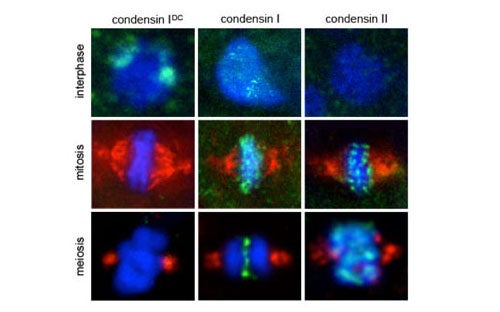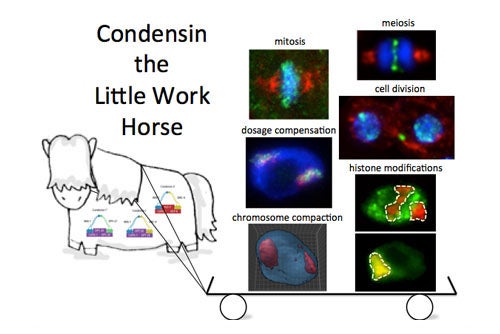Follow us on Twitter! @CsankovszkiLab
Research in our laboratory encompasses three basic processes relating to developmental biology: regulation of gene expression, segregation of chromosomes, and cytokinesis. While these three processes are seemingly different, our research has uncovered several unexpected and novel connections between them. We found that condensin complexes can contribute to structural changes of chromatin and chromosomes both in the context of gene regulation and in the context of mitotic and meiotic chromosome segregation. Furthermore, we also found that condensin may function away from chromosomes during cytokinesis.

Three condensin complexes regulate chromosome dynamics in C. elegans. Condensin I DC downregulates gene expression on the two X chromosomes of hermaphrodites. Condensin I and condensin II function in mitosis and meiosis. Condensin complexes are shown in green, microtubules in red and chromosomes in blue.
We use the nematode C. elegans as a model organism to study condensin function. C. elegans possesses three distinct condensin complexes, condensin IDC, condensin I and condensin II (Csankovszki et al. Curr Bio 2009). Condensin IDC and condensin I differ in only one of five subunits, yet they perform completely different functions. Condensin IDC regulates expression of genes on the X chromosomes in a process called dosage compensation. By contrast, condensin I, together with condensin II, regulate chromosome segregation during mitosis and meiosis. By dissecting the various contributions of condensin function to each process, our research will provide new insights into how different cellular processes are coordinated to ensure optimal performance of the organism.


